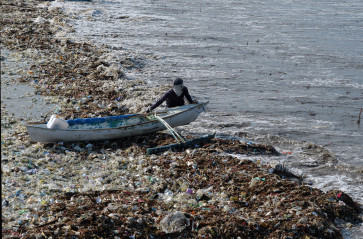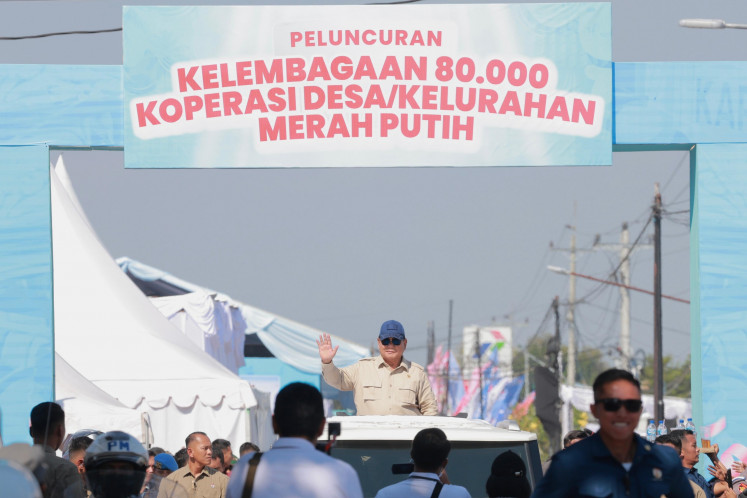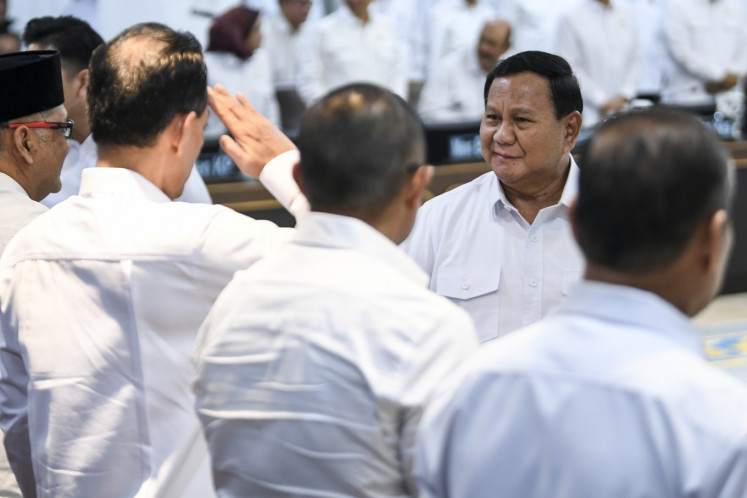Popular Reads
Top Results
Can't find what you're looking for?
View all search resultsPopular Reads
Top Results
Can't find what you're looking for?
View all search resultsIndonesia’s record improves as global deforestation worsens
Indonesia had managed to reduced its tropical primary forest loss by 64 percent as of 2022, according to data from the latest report by the Global Forest Watch (GFW) think tank.
Change text size
Gift Premium Articles
to Anyone
Indonesia has reduced the loss of crucial forest cover amid worsening global trends, a 2022 Global Forest Watch (GFW) report shows.
As one of the so-called “lungs of the world”, scrutiny of Indonesia’s climate and environment policies is more pronounced than with other nations, as the global climate crisis makes the planet more uninhabitable for future generations.
According to the GFW report released last week, the world continued to suffer from deforestation, with about 4.1 million hectares of tropical primary forest loss recorded in 2022, or about 10 percent more than the previous year.
Of that figure, Indonesia lost 230,000 ha, an increase from 203,000 ha in 2021, but which on average is still considered “historically low”, according to analysis from senior geographic information systems researcher Elizabeth Goldman of the GFW.
The data is determined by comparing average forest loss between 2015 and 2017 with that of 2020-2022. Using this method, Indonesia had managed to reduce by 64 percent primary forest loss as of 2022.
“Indonesia has reduced its primary forest loss more than any other country in recent years, and both government measures and corporate actions are coming together to have a positive impact on forests there,” Goldman said during a briefing on the report on June 22.
She noted that hot spot monitoring, law enforcement, a moratorium on natural forest clearing and commitments to protect peatland and mangrove areas were just some of the policies that had contributed to the improved outcome.
Due to differing definitions of “tropical primary forest loss” employed by the GFW and deforestation as interpreted by the Indonesian government, Goldman also acknowledged that there still are discrepancies in the data sets used.
In an effort to address this gap, the World Resources Institute (WRI) and the Environment and Forestry Ministry have entered into a partnership to strengthen the nation’s forest-monitoring system and layered Indonesia’s own official data into the GFW report.
“In a preliminary joint analysis, we found that 107,000 ha of our primary forest loss data fell within [Indonesia’s] officially mapped forest classes,” Goldman said.
On Monday, the forestry ministry announced that it had recorded a historic low in deforestation figures at 104,000 ha in 2021-2022, an 8.4 percent reduction from 113,500 ha in 2020-2021.
The ministry’s acting director general for forest and environmental planning, Ruandha Agung Sugardiman, said the latest data proved that Indonesia’s deforestation rate continued to be low and stable.
“This proves that the ministry’s efforts are showing significant results,” Ruandha said during a briefing on Monday, according to a ministry press statement.
However, environmentalists remain cautious about the supposed decline in Indonesia’s deforestation, calling for even stronger measures to stop it outright.
While lauding the decreasing rates of deforestation, Madani Foundation executive director Nadia Hadad warned that many incidents of deforestation have occurred within designated industrial forests and concessions.
She said that based on Madani’s study of deforestation from 2020 to 2021, the think tank found that some 62 percent of natural forest losses occurred within existing concessions.
“It’s important for the government to be transparent about the data, as permits and concessions in Indonesia actually manage vast areas of natural forests,” Nadia told The Jakarta Post on Tuesday.
She also urged the government to protect natural forests outside of concession areas and within areas under the moratorium through incentivized measures and policies.
Separately, Greenpeace Indonesia forest campaigner Arie Rompas criticized the government for celebrating such meager numbers, even as the bigger picture still shows that deforestation is occurring at a growing pace.
“There’s no guarantee that the trend of deforestation will continue to decrease, as there’s no strong policies that are directed toward achieving zero deforestation,” Arie told the Post on Tuesday.
He argued that current policies still provided loopholes for deforestation to occur, including the much-maligned Job Creation Law that effectively offers an amnesty for oil palm plantations within protected forested areas, or even indicative concession maps that keep on changing.
On Friday, Coordinating Maritime Affairs and Investment Minister Luhut Pandjaitan admitted to recent findings by the Development Finance Comptroller (BPKP) that illegal oil palm plantations amounted to 3.3 million ha, and that the government was forced to grant them an amnesty.
Palm oil is the nation’s most lucrative export commodity, and the target of many anti-deforestation campaigns.
Arie said that land-use change was one of the main causes of the current climate crisis, and that putting a stop to deforestation was a crucial step in stopping global temperatures from rising by 1.5 degrees Celsius, in accordance with the Paris Climate Summit targets.
“We must enact progressive steps to stop deforestation and restore forests that have been damaged,” Arie said.










